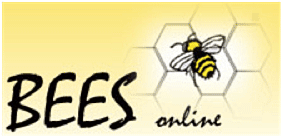The Buzz on BEES: New Web App Simplifies Use of NIST's Economically Green Building Products Tool

A powerful scientific tool for selecting cost-effective and environmentally preferable building products is now available as a free, web-based application. Developed and maintained by the National Institute Standards and Technology (NIST), BEES (Building for Environmental and Economic Sustainability) Online is based on consensus standards and designed to be practical, flexible and transparent.
The web-based version allows easier access for users and will enable new building products to be added to the database as the information becomes available.
BEES originally was developed in 1997 to bring stringent science and economics to green building product selection. "NIST wanted to reduce the environmental footprint of building products in a cost-effective way and brought science-based metrics and tools to designers and specifiers," explains Barbara Lippiatt, lead economist for the project.
BEES translates science-based, technical data on building products into decision-enabling results that can be easily understood and applied by the building community. The earlier versions of BEES, a software package made available for free download by NIST, have an estimated user base of 30,000, including designers, builders, product manufacturers and students in more than 80 countries.
BEES Online measures the environmental performance of 230 building products based on the approach called life-cycle assessment specified in the ISO (International Organization for Standardization) 14040 series of standards "to evaluate environmental performance from cradle-to-grave," says Lippiatt. The building products range from a variety of concretes to exterior wall components, roof coverings and multiple floor-covering types.
All stages in the life of a product are analyzed: raw material acquisition, manufacture, transportation, installation, use, and recycling and waste management. Users can define methods to weigh the impacts, which range from global warming, smog, indoor air quality, human health and fossil fuel depletion, using predefined weights chosen by BEES stakeholders or the Environmental Protection Agency Science Advisory Board or using their own methods.
Economic performance is measured using the ASTM standard life-cycle cost method, which covers the costs of initial investment, replacement, operation, maintenance and repair, and disposal. Environmental and economic performance is combined into an overall performance measure using other ASTM standards.
Environmental and economic performance are both measured over a 50-year period. Users can choose to vary the weights for evaluating environmental and economic performance.
BEES is used to evaluate the performance of building products and can be used to help assess buildings. BEES stakeholder weights are used in the third version of the U.S. Green Building Council's LEED-certification program for sustainable commercial and residential buildings, and BEES is a valuable tool for use in certifications.
NIST's goal for building performance research is evolving to look at whole buildings rather than components.

